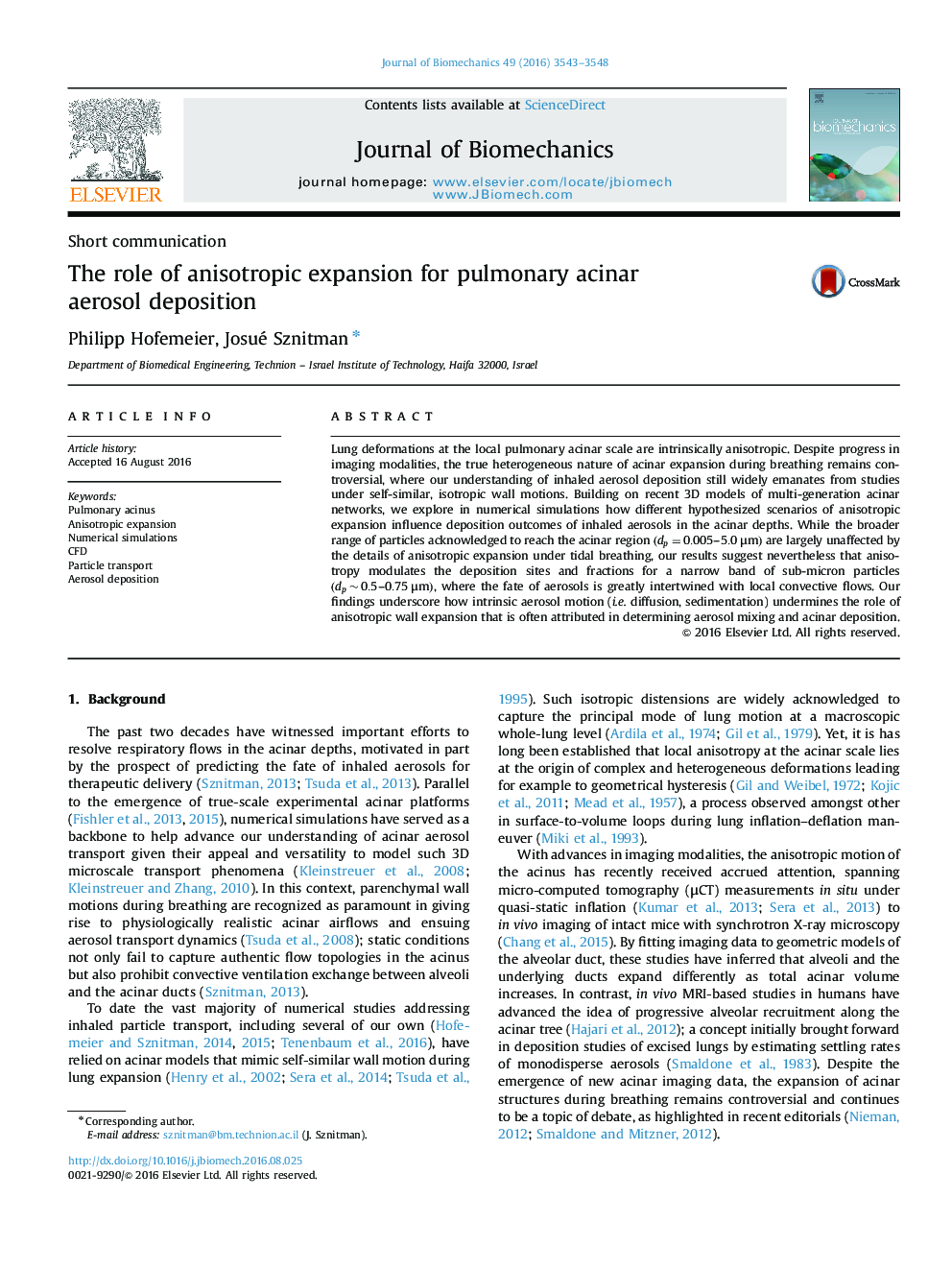| Article ID | Journal | Published Year | Pages | File Type |
|---|---|---|---|---|
| 5032568 | Journal of Biomechanics | 2016 | 6 Pages |
Abstract
Lung deformations at the local pulmonary acinar scale are intrinsically anisotropic. Despite progress in imaging modalities, the true heterogeneous nature of acinar expansion during breathing remains controversial, where our understanding of inhaled aerosol deposition still widely emanates from studies under self-similar, isotropic wall motions. Building on recent 3D models of multi-generation acinar networks, we explore in numerical simulations how different hypothesized scenarios of anisotropic expansion influence deposition outcomes of inhaled aerosols in the acinar depths. While the broader range of particles acknowledged to reach the acinar region (dp=0.005-5.0μm) are largely unaffected by the details of anisotropic expansion under tidal breathing, our results suggest nevertheless that anisotropy modulates the deposition sites and fractions for a narrow band of sub-micron particles (dp~0.5-0.75μm), where the fate of aerosols is greatly intertwined with local convective flows. Our findings underscore how intrinsic aerosol motion (i.e. diffusion, sedimentation) undermines the role of anisotropic wall expansion that is often attributed in determining aerosol mixing and acinar deposition.
Related Topics
Physical Sciences and Engineering
Engineering
Biomedical Engineering
Authors
Philipp Hofemeier, Josué Sznitman,
